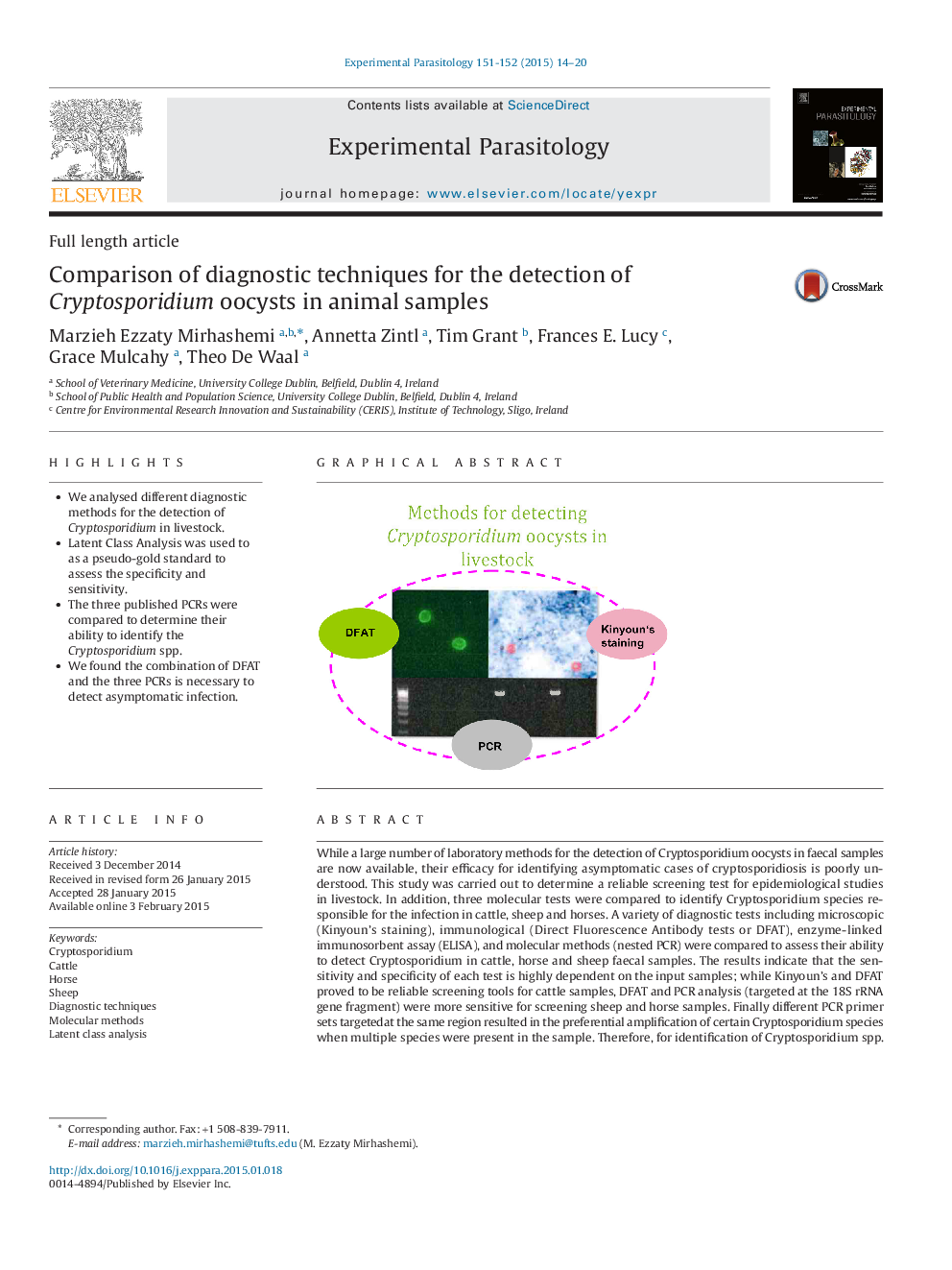| کد مقاله | کد نشریه | سال انتشار | مقاله انگلیسی | نسخه تمام متن |
|---|---|---|---|---|
| 4371017 | 1617013 | 2015 | 7 صفحه PDF | دانلود رایگان |

• We analysed different diagnostic methods for the detection of Cryptosporidium in livestock.
• Latent Class Analysis was used to as a pseudo-gold standard to assess the specificity and sensitivity.
• The three published PCRs were compared to determine their ability to identify the Cryptosporidium spp.
• We found the combination of DFAT and the three PCRs is necessary to detect asymptomatic infection.
While a large number of laboratory methods for the detection of Cryptosporidium oocysts in faecal samples are now available, their efficacy for identifying asymptomatic cases of cryptosporidiosis is poorly understood. This study was carried out to determine a reliable screening test for epidemiological studies in livestock. In addition, three molecular tests were compared to identify Cryptosporidium species responsible for the infection in cattle, sheep and horses. A variety of diagnostic tests including microscopic (Kinyoun's staining), immunological (Direct Fluorescence Antibody tests or DFAT), enzyme-linked immunosorbent assay (ELISA), and molecular methods (nested PCR) were compared to assess their ability to detect Cryptosporidium in cattle, horse and sheep faecal samples. The results indicate that the sensitivity and specificity of each test is highly dependent on the input samples; while Kinyoun's and DFAT proved to be reliable screening tools for cattle samples, DFAT and PCR analysis (targeted at the 18S rRNA gene fragment) were more sensitive for screening sheep and horse samples. Finally different PCR primer sets targetedat the same region resulted in the preferential amplification of certain Cryptosporidium species when multiple species were present in the sample. Therefore, for identification of Cryptosporidium spp. in the event of asymptomatic cryptosporidiosis, the combination of different 18S rRNA nested PCR primer sets is recommended for further epidemiological applications and also tracking the sources of infection.
Graphical AbstractFigure optionsDownload as PowerPoint slide
Journal: Experimental Parasitology - Volumes 151–152, April–May 2015, Pages 14–20